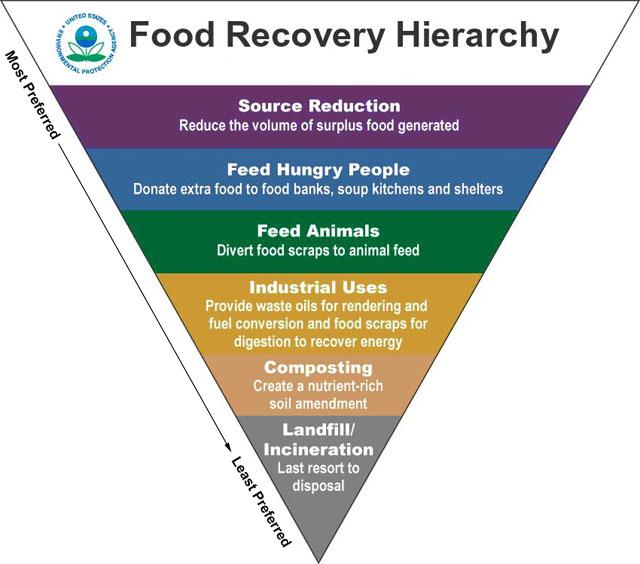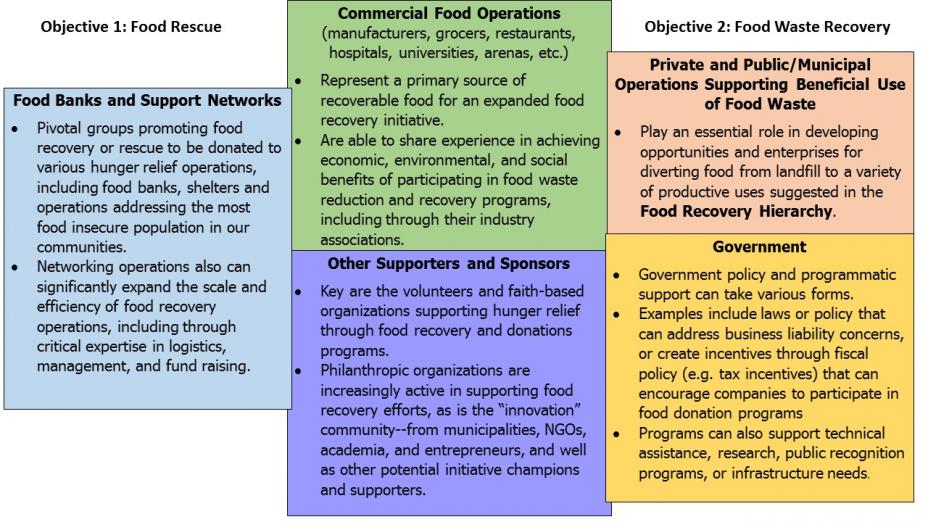International Efforts on Wasted Food Recovery
EPA is working to mobilize international action to improve food security, reduce and recover wasted food from commercial operations, and reduce methane emissions by diverting wasted food from landfills to other productive uses.
EPA seeks to champion, mobilize and recognize collaboration, innovation and success in solving the global food waste challenge. Our goal is to promote source reduction of wasted food and to convert a major share of the estimated one third of food wasted globally from waste to a productive resource.
EPA efforts to address wasted food use a Sustainable Materials Management (SMM) approach. Our wasted food program includes two objectives:
- Rescue/recovery of wasted food (which is still safe and nutritious for human consumption) from commercial and institutional operations, for donation to food banks and similar charities assisting the most food insecure in our communities, or through other innovative enterprises.
- Food waste source reduction and diversion of food from landfill disposal to other productive uses, with associated economic and environmental benefits, including climate protection, based on the food recovery hierarchy.
Learn more:
The Food Recovery Hierarchy
A Food Recovery Hierarchy prioritizes actions organizations can take to reduce or recover wasted food or food waste. The most preferred steps are source reduction and food rescue to feed the most food insecure. Recovery for other valued uses, such as to feed animals or for industrial uses, are prioritized next, then composting. Incineration and landfill are the least preferred options.

A Sustainable Materials Management Approach
A Sustainable Materials Management Approach serves human needs by using/reusing resources most productively and sustainably throughout their life cycles. Actions focus on rescuing food for human consumption, but also seek to solve problems and address opportunities created by food waste, including non-edible portions of disposed food.
This approach seeks to look at food waste as possible feedstock for enterprises that ideally recirculate these resources at their highest value and best use. For this effort, the emphasis is less on the front of food supply chain--field to market--but rather on the back end of the system--from manufacturer/retailer to disposal.
This approach is aligned with promoting a more Circular Economy. Exit
The Right Mix of Players
Effective interaction and partnership among the right mix of organizations are needed to optimize food rescue and food waste recovery opportunities, and to address the problem of food waste successfully. Each organization has distinct roles and contributions in the development of food recovery systems. Examples of key players in this mix include:

